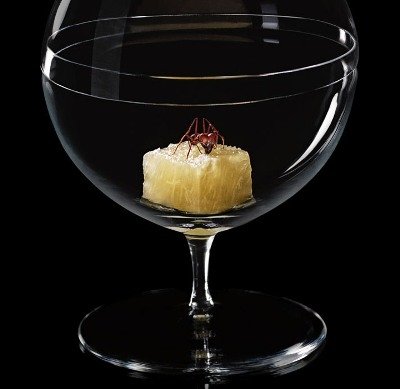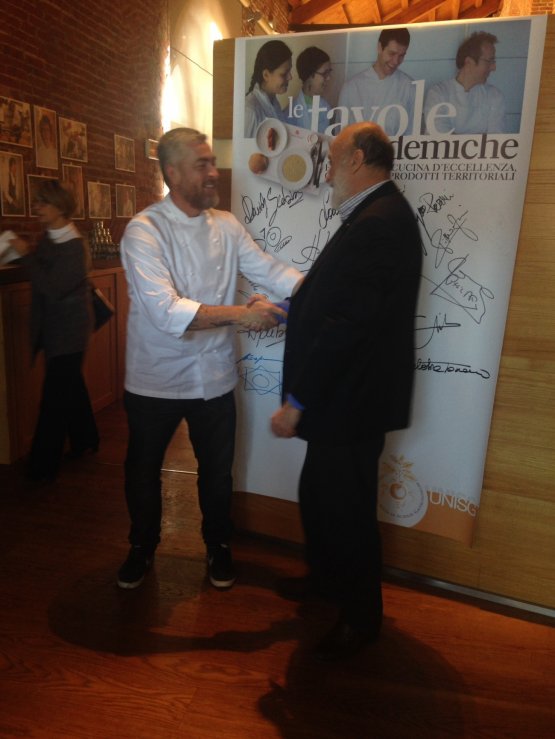It’s called “D.O.M. Rediscovering Brazilian Ingredients”, it is published by Phaidon and it is the new great editorial project by chef Alex Atala from São Paulo, who recently visited the Università di Scienze gastronomiche di Pollenzo (Cuneo) to present the content of his book to the Italian public.
The volume was born out of the idea of making the world understand how Brazilian cuisine is capable of going far beyond the concepts of churrasco and feijoada. In this book, throughout 65 recipes, the essence of ingredient that entirely produced in the largest country in South America is told. This represents the journey across high cuisine that Atala has been leading in his restaurant in São Paulo.

Ants and grapefruit, a great match according to the paulista chef
The 65 ingredients in the book are the protagonists of sweet and savoury recipes and almost all of them are wild: in other words, they grow naturally, and in many cases they are difficult to get. The most renown and easy to find is
tapioca, but few people know
pupunha (the heart of the palm, used as a vegetal paste),
priprioca (a root used in the chemical and pharmaceutical industry and distilled by the chef to make it edible),
tucupi (a wild manioca, used as a yellow liquid to acidify a dish, which is highly poisonous if you don’t boil it for at least 24 hours in order to make the cyanide evaporate),
riso preto (black rice) or
mini riso.
The latter, which is much different from its Italian relatives, was a true discovery for the chef: 9 years ago he decided to work around the elastic texture of this cereal, with some experimental preparations. Its flavour is very similar to that of Brazilian nuts and it also has a smoky note that comes out only after a long cooking in water. Today this Brazilian product is appreciated and renowned beyond high cuisine.
You can enjoy it at restaurant D.O.M. which in 2014 will celebrate 15 years of activity: Atala started in 1999 with a team of 40 people that served 5 thousand guests each month. Today the staff has doubled yet serves a fifth (1.000) of the initial clients. Among the words the chef said in Pollenzo: «Cooking is transforming the ingredients into food and creativity, it is doing what everyone does, but in a surprising way». His daily objective? «To give pleasure». While «My cuisine is no alchemy nor chemistry but a precise science to be reproduced and told with precision».

Alex Atala and Carlo Petrini at the Pollenzo meeting, last December
Italy has a place in the heart of the chef from São Paulo: «From
Salone del Gusto to
Identità Golose» (
Carlo Petrini and
Paolo Marchi were among the first to sense
Atala’s talent, Editor’s note) to the theme of
Expo 2015, “Feeding the Planet”, came the inspiration to speak about his now famous Amazonian ants: «While honey is bees’ vomit», he explained, «and milk is a secretion produced by cows, I don’t understand why we shouldn’t also eat the citronella or ginger notes that small insects release, which also have a high protein value. For instance, in a fantastic match with pineapple. You only need to overcome the psychological obstacle that precedes the tasting». Word of
Atala.